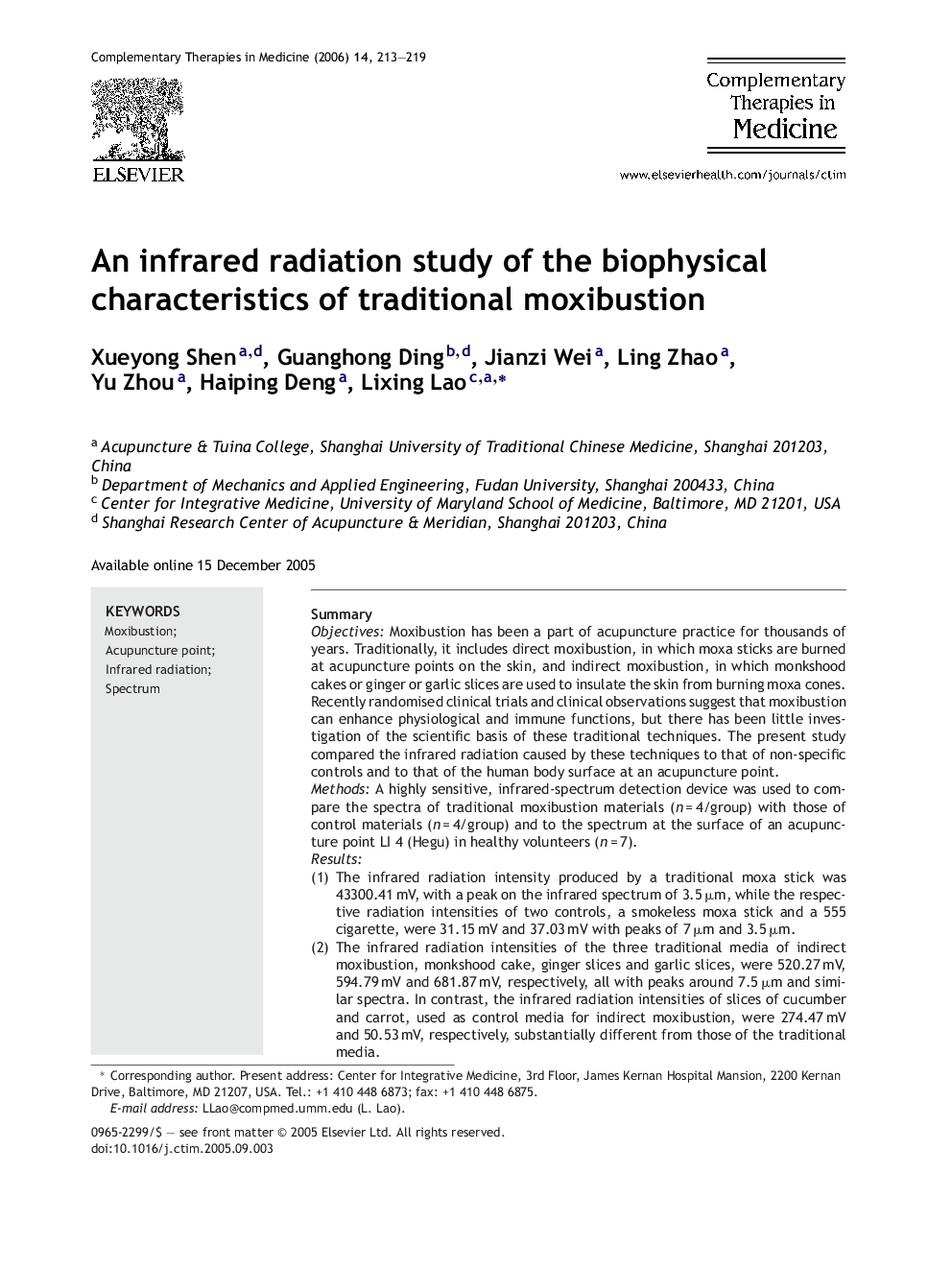| کد مقاله | کد نشریه | سال انتشار | مقاله انگلیسی | نسخه تمام متن |
|---|---|---|---|---|
| 2629621 | 1136598 | 2006 | 7 صفحه PDF | دانلود رایگان |

SummaryObjectivesMoxibustion has been a part of acupuncture practice for thousands of years. Traditionally, it includes direct moxibustion, in which moxa sticks are burned at acupuncture points on the skin, and indirect moxibustion, in which monkshood cakes or ginger or garlic slices are used to insulate the skin from burning moxa cones. Recently randomised clinical trials and clinical observations suggest that moxibustion can enhance physiological and immune functions, but there has been little investigation of the scientific basis of these traditional techniques. The present study compared the infrared radiation caused by these techniques to that of non-specific controls and to that of the human body surface at an acupuncture point.MethodsA highly sensitive, infrared-spectrum detection device was used to compare the spectra of traditional moxibustion materials (n = 4/group) with those of control materials (n = 4/group) and to the spectrum at the surface of an acupuncture point LI 4 (Hegu) in healthy volunteers (n = 7).Results(1)The infrared radiation intensity produced by a traditional moxa stick was 43300.41 mV, with a peak on the infrared spectrum of 3.5 μm, while the respective radiation intensities of two controls, a smokeless moxa stick and a 555 cigarette, were 31.15 mV and 37.03 mV with peaks of 7 μm and 3.5 μm.(2)The infrared radiation intensities of the three traditional media of indirect moxibustion, monkshood cake, ginger slices and garlic slices, were 520.27 mV, 594.79 mV and 681.87 mV, respectively, all with peaks around 7.5 μm and similar spectra. In contrast, the infrared radiation intensities of slices of cucumber and carrot, used as control media for indirect moxibustion, were 274.47 mV and 50.53 mV, respectively, substantially different from those of the traditional media.(3)Infrared radiation at LI 4 (Hegu) was 20.40 mV, and peaked on the infrared spectrum at about 7.5 μm.The experiment showed that the thermal action of the traditional moxa stick was more potent than that of indirect moxibustion and its radiation peak was different from that at the acupuncture point on the human body. In contrast, the thermal action of traditional indirect moxibustion was modest and its radiation peak matched that at the acupuncture point.ConclusionDirect moxibustion with a traditional moxa stick may produce its potent therapeutic effects by thermal action, while traditional indirect moxibustion may act by producing modest thermal action and a sympathetic vibration at the skin surface. Non-traditional thermal materials and media may not be suitable substitutes for traditional materials. The data provide a scientific, biophysical rationale for traditional moxibustion.
Journal: Complementary Therapies in Medicine - Volume 14, Issue 3, September 2006, Pages 213–219